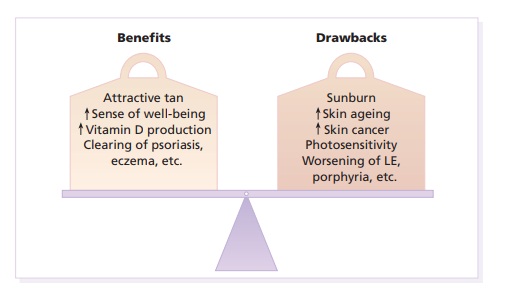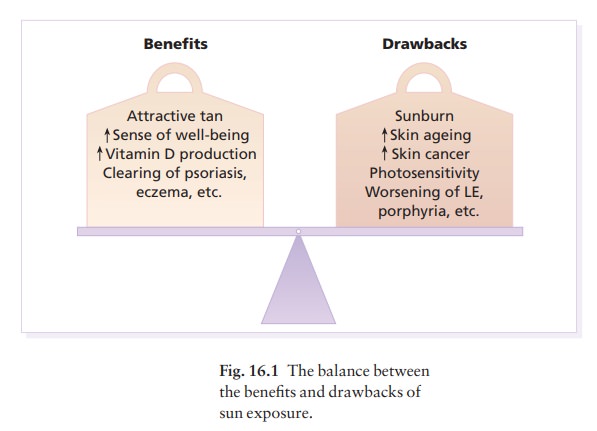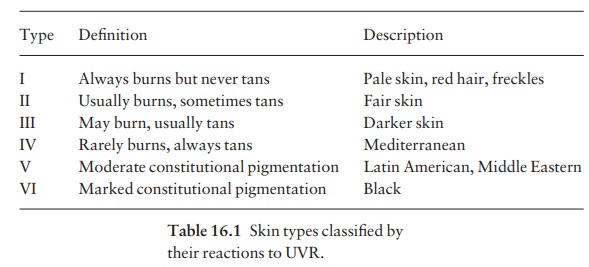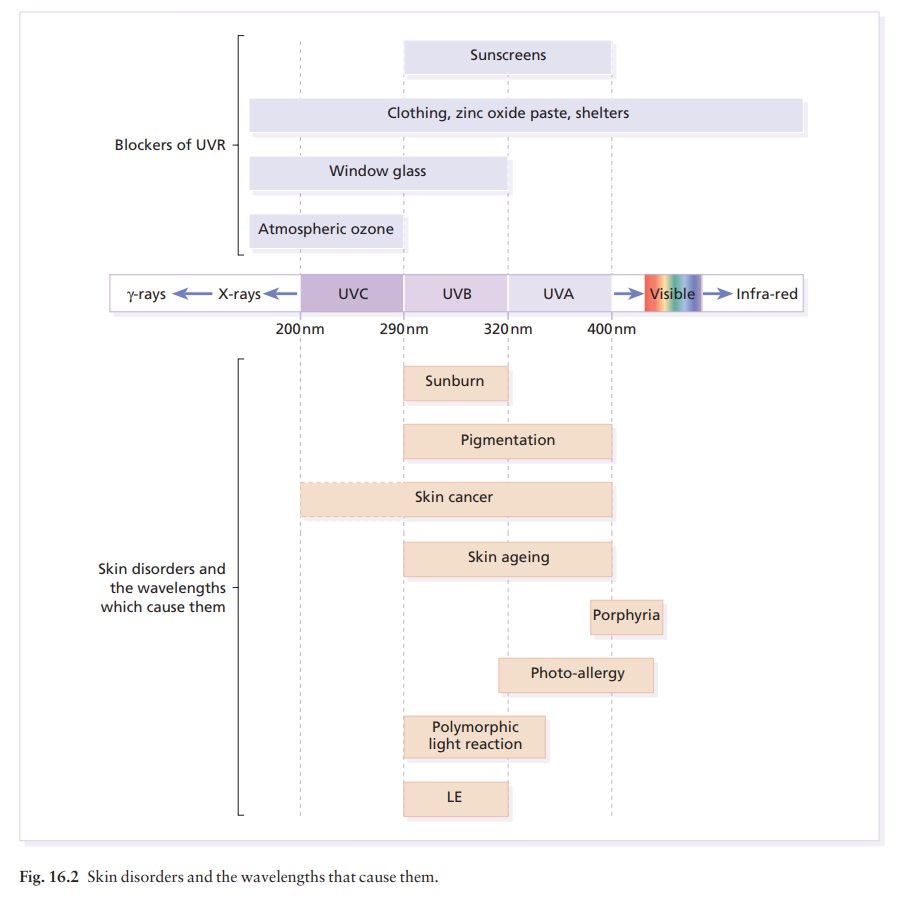Chapter: Clinical Dermatology: Skin reactions to light
Skin reactions to light

Skin
reactions to light
Ultraviolet
radiation (UVR) can be helpful when used to treat diseases such as psoriasis,
but it can also be harmful (Fig. 16.1). It is the leading cause of skin cancers,
and causes or worsens several skin disorders. UVR is non-ionizing, but changes
the skin chemically by reacting with endogenous light-absorbing chemi-cals
(chromophores), which include DNA, RNA, uro-canic acid and melanin. Different
types of skin (now conventionally divided into six types; Table 16.1) react
differently to UVR, and require different degrees of protection against the
sun.


The
UVR spectrum is divided into three parts (Fig. 16.2), each having different
effects on the skin, although UVC does not penetrate the ozone layer of the
atmosphere and is therefore currently irrelevant to skin disease. Virtually all
of the UVB is absorbed in the epidermis, whereas some 30% of UVA reaches the
dermis. The B wavelengths (UVB: 290 –320 nm) cause sunburn and are effectively
screened out by window glass. The A spectrum (UVA) is long-wave ultraviolet
light, from 320 nm to the most violet colour perceptible to the eye (about 400
nm). It ages and tans the skin. The differences between the wavelengths can be
recorded conveniently in the form of action spectra, which show how effective
each is at producing different biological effects, such as clearing psoriasis
or causing erythema.

Related Topics